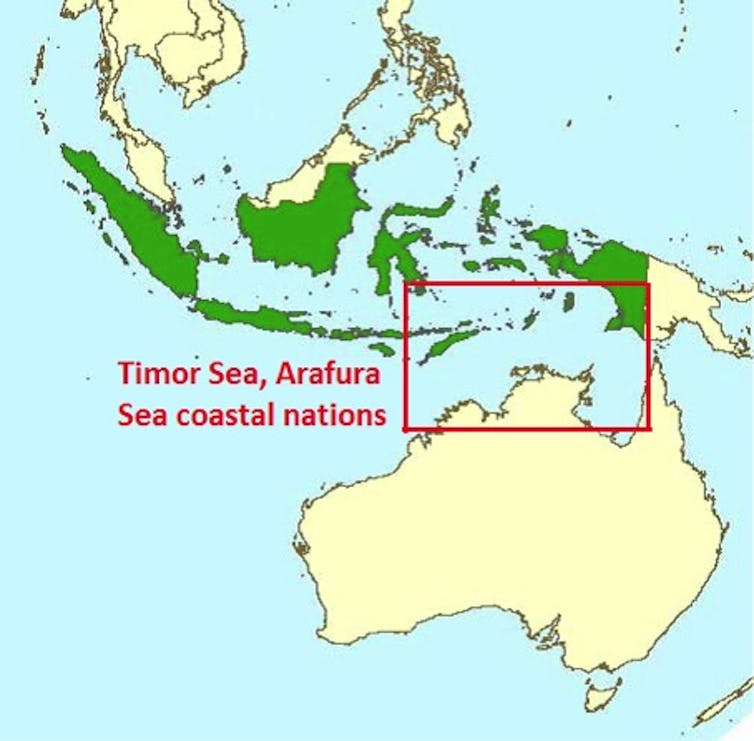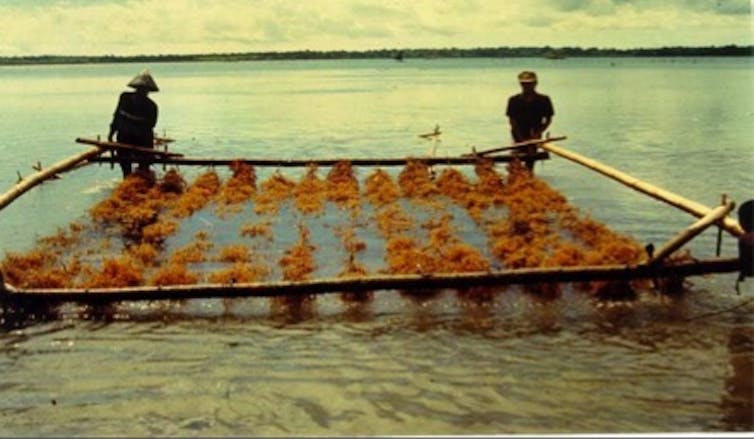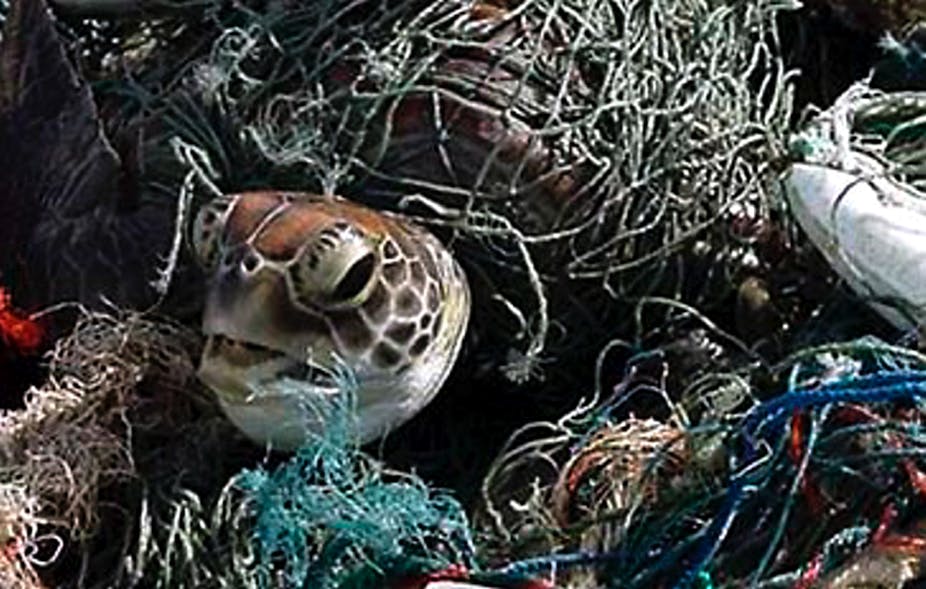Are we spending money on the wrong marine resources? While some $A100 million is being thrown at a new network of marine protected areas – a doubtful investment according to some commentators - the fabulous resources of our northern waters are being pillaged and are in a parlous state. The recent cancellation of a program to remove killer fishing nets from these waters suggests our funding priorities are flawed.
Out of control exploitation?
The tropical and semi-enclosed Arafura and Timor Seas are shared by Australia, Indonesia, Timor-Leste and Papua New Guinea. The region is extremely rich in living and non-living marine resources and is also an integral part of the Coral Triangle zone, considered to have the highest marine biodiversity in the world.
Australia’s exclusive economic zone extends from the waters of the Gulf of Carpentaria up into the Timor and Arafura seas. In theory we have control over who can fish there and how they fish. However, while our northern coasts have only a sprinkling of humans, the coasts of the countries bordering these seas support very high populations.
The millions of coastal people in the region traditionally rely on the bounty of seas, those now within Australia’s exclusive economic zone included.

Illegal fishing of worrying dimensions is evident in the troubled state of northern snapper and shark stocks, with the latter also subject to shark finning.
Moreover, there is an unstated but likely large toll being taken on turtles, endangered species that we go to enormous lengths to conserve elsewhere.
Killer fishing nets
The thousands of killer fishing nets found in our northern waters and on beaches demonstrate just how out of control the exploitation of the Timor and Arafura Seas is.
Fishers cut away these “ghost” nets when they become entangled or when the fishers need to run from patrols. They also come adrift when sliced away by competing fishing vessels.
The nature of tides in the region means that the discarded nets eventually concentrate in the eastern and western inshore waters of the Gulf.
While the nets, in their hundreds of kilometres, are floating from the northern seas into the Gulf they do on-going and untold damage to marine life. Surface swimming fish and turtles are particularly likely to be trapped.
Australia’s Indigenous people hold deep cultural connections and responsibilities for marine resources and the impact ghost nets have on both wildlife and habitats is of particular concern to them.
The ghost net problem received recent publicity when the Indigenous rangers, who have collected 13,000 nets since 2004 and saved hundreds of turtles, had their funding discontinued by the Commonwealth.
The problem of ghost nets should be looked at as a symptom and a measure of the plunder of our northern marine environment by illegal fishing and overfishing, rather than as a separate and isolated issue.
Cooperation the key
Australia is already working with Timor-Leste and Indonesia to try to improve the livelihoods of their coastal people and thus reduce their dependency on already depleted fish stocks.

This cooperative approach recognises that threats facing the Timor and Arafura Seas region are trans-boundary in nature. They can only be effectively addressed through cooperation of all four coastal nations.
Given the value of the resources at stake, the Australian aid going to this project could be well spent. And the ghost net data, recorded over time by the rangers, provides an ongoing measure of the cooperative project’s success or otherwise.
The Commonwealth could therefore take a new look at the Ghost Nets Australia project. It should be seen as an integral part of the effort to achieve better management of our northern marine resources and threatened species.

